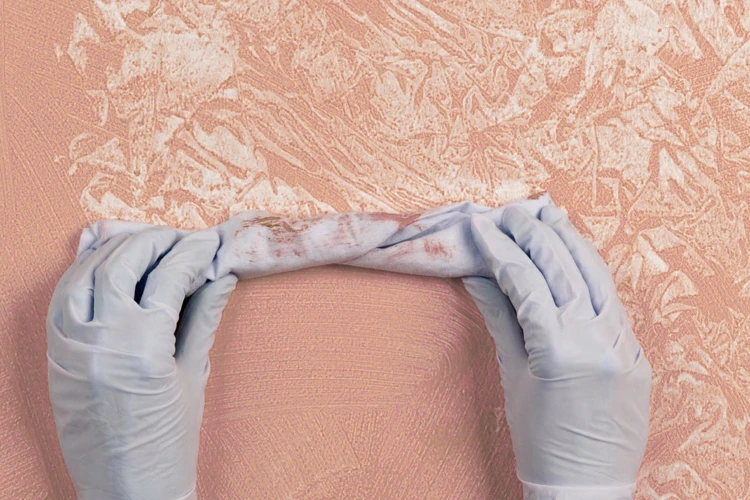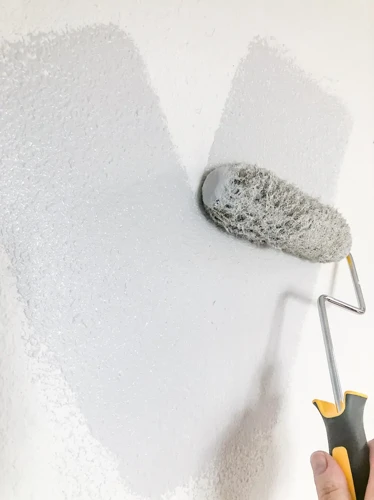Transforming a plain wall into a visually striking surface can be achieved with a classic yet ever-evolving method known as the rag rolling technique. This textured paint technique not only adds depth and character to a room but also allows for a personalized touch in your interior design. Whether you aim to create a cozy, rustic vibe or a sophisticated, elegant atmosphere, mastering this DIY wall treatment will provide you with the tools to make a significant impact with subtle changes.
The Basics of Rag Rolling Technique
Rag rolling is a faux finish painting method that involves rolling a rag up and down wet walls to create a unique, textured wall look. The beauty of this technique lies in its simplicity and the fact that it can be easily customized to fit any decor style. It’s a perfect way to add dimension and movement to otherwise flat surfaces.
Tools and Materials for Rag Rolling Paint
- Latex or oil-based paint for the base coat
- Glaze or top-coat paint in a contrasting color
- Clean, lint-free rags or cotton fabric
- Paint tray and liners
- Paint roller and brushes
- Painter’s tape
- Drop cloths to protect your floors
Step-by-Step Guide to Achieving a Textured Wall Look
Preparing Your Walls for Rag Rolling
Success in rag rolling begins with preparation. Start by cleaning the walls to remove dust and grime. Repair any holes or cracks, and sand down the surfaces to ensure they’re smooth. Tape off the trim, ceiling, and adjacent walls with painter’s tape to protect them from the glaze and base coat paints.
Applying the Base Coat for Your DIY Wall Treatment
Choosing the right base coat color is crucial as it will significantly affect the final appearance. Apply the base coat evenly using a paint roller, and let it dry completely according to the manufacturer’s instructions. Patience is key here, as a well-dried base coat is essential for a successful textured finish.
Mastering the Rag Rolling Paint Technique
Once the base coat is dry, it’s time to practice your rag rolling skills. Dip the rag into the glaze, then wring it out to avoid excess paint. Starting from the top of the wall, roll the rag down in a random, meandering pattern. Work in sections, ensuring the glaze doesn’t dry before it’s manipulated. Continue around the room until the entire wall is artfully textured.
Designing with Texture: How Rag Rolling Enhances Interior Design
Incorporating Rag Rolling into Home Decor
Integrating this textured paint technique into your home decor provides a tactile and visual experience that wallpaper or plain paint simply can’t match. Rag rolling can complement furnishings and fabrics, adding an extra layer of interest to any room’s decor.
Wall Texture Ideas: Combining Rag Rolling with Other Techniques
To further elevate the rag rolled walls, consider combining this technique with other texturizing methods like sponging or color washing. These combinations can produce depth and complexity, creating a bespoke textured wall look that reflects your unique aesthetic.
Faux Finish Mastery: Tips and Tricks for a Perfect Textured Look
Painting Tips for a Flawless Faux Finish
For a flawless faux finish, practice your rag rolling paint technique on a piece of cardboard before tackling the walls. Ensure your glaze is mixed thoroughly for a consistent color throughout the room. Keep your movements random to avoid creating patterns that can detract from the natural, organic look.
Common Mistakes to Avoid with Rag Rolling
Avoid common pitfalls such as overworking the glaze, which can lead to a muddied appearance. Be careful not to press too hard with the rag, as this can remove too much glaze and expose the base coat. Always keep a wet edge to prevent noticeable seams between sections.
Maintaining Your Textured Walls: Care and Touch-up Strategies
Cleaning Textured Surfaces
Textured walls require gentle cleaning to preserve their unique finishes. Dust regularly with a soft cloth or duster, and for more thorough cleaning, use a mild soap and water solution, being careful not to saturate the wall.
Simple Fixes for Rag Rolled Walls
If your walls need a touch-up, replicate the original rag rolling technique with the same colors. Mask off the surrounding area and work on the repair section, blending it seamlessly into the existing texture.
Inspiration and Ideas: Real-Life Examples of Rag Rolling in Interior Design
Showcasing Textured Paint Technique in Different Rooms
Explore how the rag rolling technique can be adapted to different spaces. In a bedroom, soft pastel glazes over a light base coat can create a serene, dreamy atmosphere. In a dining room, bold, rich colors can add drama and sophistication.
Before and After: Transformations with Rag Rolling
Witnessing the transformation of a room with rag rolling is nothing short of impressive. Before-and-after images of rag rolled rooms highlight the technique’s power to overhaul a space’s ambiance, taking it from mundane to extraordinary.
If you’re aiming to give your home a unique and textured look, rag rolling is a fantastic painting technique to consider. For those who love the idea of adding character to their furniture, our guide on distressed look furniture paint can help you achieve that vintage charm. If it’s the walls you’re looking to transform, staying up-to-date with home trending paint colors for a modern look can inspire your next project. And for the DIY enthusiasts, our tips on DIY spray painting furniture can make your revamping process smoother and more efficient. Explore these resources to bring a fresh and textured flair to your living space!
Conclusion: Embracing the Beauty of Faux Finishes with Rag Rolling
In conclusion, rag rolling is a versatile and accessible textured paint technique that can revolutionize the way you approach interior design. It offers endless possibilities for customization and can be adapted to suit any style preference. With the right tools, a bit of practice, and a creative mindset, you can master the art of rag rolling and create a distinctive, textured wall look that brings depth and personality to your home decor.


